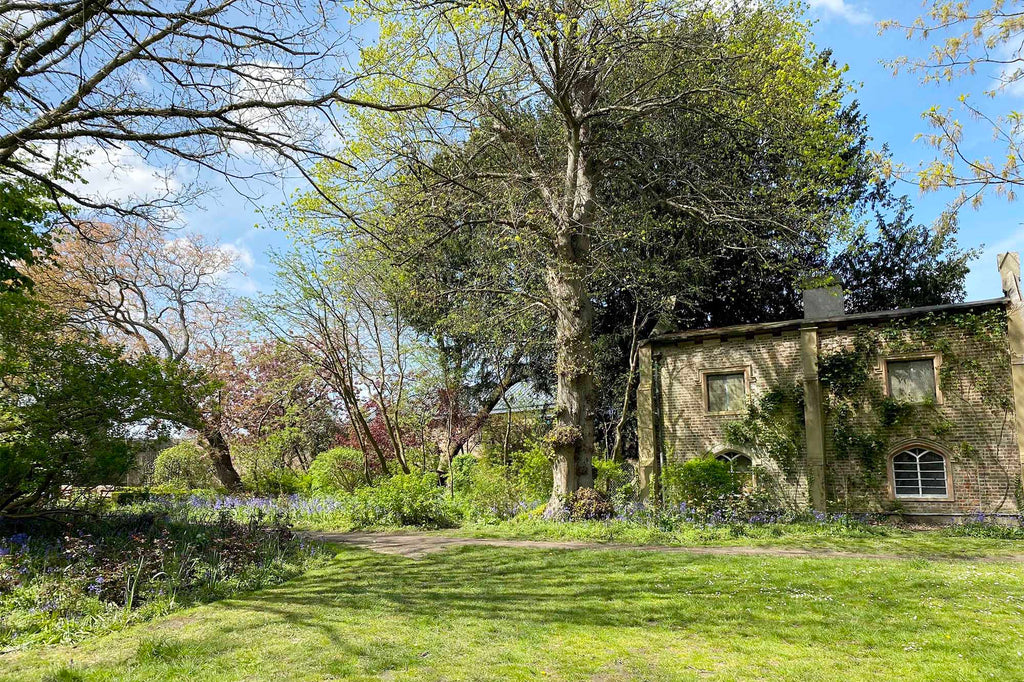Secret Gardens: Cannizaro Park, Wimbledon
Posted by SECRET GARDENER

To celebrate the start of the Wimbledon Championships, we’re exploring some of the beautiful #SecretGardens in SW19. Cannizaro Park is the oldest of all the parks in the area, with Grade II* listed status and home to an outstanding collection of rare trees and shrubs, still being added to the park today.

Above: the park as seen on a Spring day in April
History of Cannizaro house and estate
Cannizaro Park was once the site of a grand estate owned by the Duke of Cannizzaro in the 19th century. The estate's mansion served as a home for various noble families over the years until it was eventually converted into a hotel.

Above: The Belvedere in Cannizaro Park, known as 'the Retreat' planted with species of pine, maple and cypress in the 1970s
The park’s unusual name is actually a misspelling of a typical Italian surname, Cannizzaro. Heiress and occupier of the existing house (then known as Warren House), Sophia Johnstone, married Sicilian Count, Francesco Plamonte, and together they entertained many historic figures such as the Duke of Wellington during their time there. The house’s reputation as a country retreat continued long after their occupancy of the house, which was enjoyed by many famous and royal guests – including King George III, Lord Tennyson, Oscar Wilde and Henry James.
The Count eventually left England (with his mistress) after he inherited the title of Duke of Cannizzaro in Sicily. Sophia kept the name of Cannizzaro until her death, and the house has been known as Cannizaro ever since.
What to see in Cannizaro Park
The park was opened to the public in 1949 and has since become one of the most popular green spaces in Wimbledon. Today, the park is managed by the London Borough of Merton and is known for its stunning gardens, picturesque lakes, and abundance of wildlife.

Above: the trees in Maple Avenue
One of the grandest highlights of Cannizaro Park are its incredible range of trees and plants. The park is home to a wide variety of plants, many of which are rare or exotic. Many of these rare shrubs and trees were planted by past owners Kenneth and Adela Wilson, who lived in the house between 1920-1947 and brought back acid soil-loving plants from their travels around America and Asia.

Above: over 100 trees have been labelled with a QR code to allow visitors to find out more information about the tree, as part of the 'Trees Project'
The garden is divided into different areas with individual planting schemes, including a Herb Garden, Rose Garden, Italian Garden, Mediterranean Garden, Water Garden, and more! Visitors can expect to see everything from towering Giant Redwoods to delicate wildflowers, depending on the season.

Above: The Rose Garden was redesigned in 2022, with David Austin roses chosen for their fragrance, colour and bee-friendliness, in addition to insect-friendly perennial planting
What to see at different times of year:
Crocus (February): In the early Spring, crocuses carpet the ground of the grassy areas of the park as far as the eye can see.

Magnolia and Blossom (April): The park is also home to several magnolia trees and an avenue of Blossom, which produce stunning pink and white blooms in the spring.

Maples (October): These beautiful trees have delicate leaves that turn bright red and orange in the Autumn, making them a popular choice for landscapers and gardeners.
Interesting facts about Cannizaro Park
In the 1700's the house was once home to Lyde Brown, Director of the Bank of England. He was reported to have died of a “fit” in 1785 when he sold his large collection of Greek and Roman antiquities to Catherine the Great and subsequently told he would only receive half the money!

Above: the lake in Cannizaro Park is home to many waterfowl
Within the park, you can find remnants of its historical past, such as the statue of Diana and the Fawn, which was originally from a Sicilian villa and created in 1841, serving as a reminder of the park's rich heritage.

Above: the statue of Diana and the Fawn
During the Victorian era, ice skating became a popular pastime in England and lakes were often used for recreational skating when the water froze over. Given its scenic landscape and the presence of a large lake, it is plausible that Cannizaro Park's lake could have been used for ice skating during this time – but today they're home to a variety of waterfowl, including ducks, geese, and swans!

Above: Vivid azaleas in the garden start to bloom in April/May
Cannizaro Park is a true hidden gem within Wimbledon’s public green spaces, offering visitors a free opportunity to explore beautiful flora from around the world. Whether you're a seasoned gardener or simply appreciate the beauty of nature, this park is a must-visit for all.

Above: the spectacular formally planted borders in the sunken garden, next to the hotel in Cannizaro Park
Getting to Cannizaro Park
Cannizaro Park is located in Wimbledon, in the southwest of London. The park is easily accessible by public transport, with the closest station being Wimbledon on the District line and National Rail, around a 20-minute journey from London Waterloo Station. From there, it's a short walk or bus journey up to Wimbledon Village to the park's entrance inside Wimbledon Common.
Cannizaro Park
35 High Street,
Wimbledon SW19 4UE

